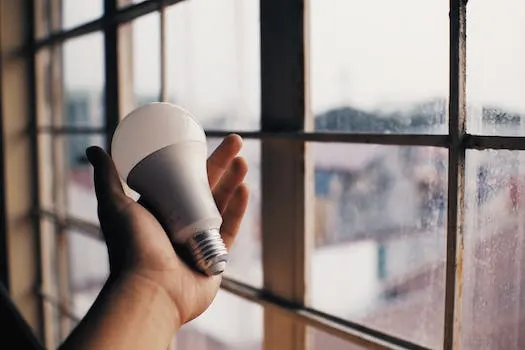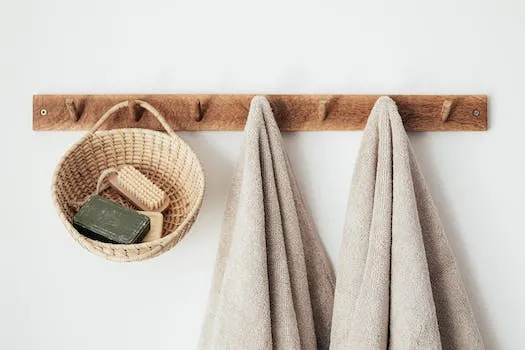
The Best Eco-Friendly Yoga Mats for a Sustainable Practice
Yoga is a great way to reduce stress, improve flexibility, and increase overall wellbeing. To ensure that your practice is as sustainable as possible, it's important to choose an eco-friendly yoga mat. With so many options on the market, it can be difficult to know which one is right for you. In this article we will explore some of the best eco-friendly yoga mats available and how you can make sure you're choosing the most sustainable option for your practice.
Natural rubber mats are often marketed as green and non-toxic but they are actually harmful for the environment due to their production process. Fortunately there are other materials that provide a more sustainable option such as cork mats which are 100% biodegradable and recyclable. They're made with natural tree rubbers and premium cork making them an excellent choice for those looking to reduce their environmental impact while still enjoying a comfortable practice.
Cork mats offer superior grip compared to other materials making them ideal for hot yoga or any type of sweaty practice where extra traction is needed. They also provide cushioning without sacrificing stability so they’re perfect for those who need extra support during their poses or inversions. Additionally, individuals who buy cork mats can feel good knowing that they’re contributing towards local communities since these products are often sourced from sustainably managed forests in Portugal or Spain where workers receive fair wages and benefits from harvesting these resources responsibly.
In addition to cork mats there are also jute/hemp blends which offer similar benefits but with slightly less cushioning than cork models due to their firmer texture. These types of eco-friendly yoga mats tend to be more affordable than other options while still providing plenty of support during your practice sessions without compromising on sustainability standards or comfort levels either!
No matter what type of eco-friendly mat you choose, it's important that you do your research before purchasing one so that you know exactly what materials were used in its production process and how much energy was required during manufacturing too! By taking these steps into consideration when shopping around for an environmentally friendly mat, not only will you be able to find one that meets all your needs but also help contribute towards creating a more sustainable future too!
What Makes a Yoga Mat Eco-Friendly?
When looking for an eco-friendly yoga mat, it is important to understand what makes a mat eco-friendly. Generally, these mats are made from natural materials such as cotton, jute or natural rubber. Some mats are also made from recycled materials like plastic bottles. Additionally, many eco-friendly yoga mats are free of toxic chemicals such as phthalates and PVC which can be harmful to the environment. Cotton yoga mats offer a great natural option that is absorbent and easy to clean but does not provide much grip on its own. Jute, cork and cotton are renewable biodegradable materials that make excellent choices for an eco-friendly yoga mat due to their sustainability and renewability. The 4mm mat is made from 100% natural PU rubber with high quality sustainable materials that are biodegradable and free of any toxic inks. Using an eco-friendly yoga mat made of natural materials is the best way to ensure a sustainable practice while still enjoying the benefits of a non slip surface during your practice. Natural rubber, cork, jute or cotton sourced sustainably make excellent choices for an environmentally friendly yoga mat due to their renewability and biodegradability while still providing enough grip for your practice without compromising on comfort or performance levels
The Benefits of an Eco-Friendly Yoga Mat
Using an eco-friendly yoga mat has many benefits beyond reducing our environmental impact. These mats are often more durable and last longer than standard, non-eco-friendly mats due to their construction from natural materials that are softer and more forgiving than synthetic materials. Additionally, eco-friendly mats have better grip and slip resistance which can be beneficial for those who practice hot yoga.
Eco-friendly yoga mats come in a variety of materials such as rubber, cork, cotton, hemp or jute. Rubber and cork are made from trees while cotton is made from a renewable source. The careful design of these eco-friendly mats leaves minimal environmental footprint throughout its production process.
Manduka is one company that offers sustainable options for yogis looking to reduce their environmental impact with their yoga mat purchases. While you'll find PVC mats and thermoplastic elastomers when you shop Manduka's selection, they also have two sustainable options: the PROlite Yoga Mat and the eKO Lite Yoga Mat both made with biodegradable non toxic material that is free of phthalates, latex or silicone.
The PROlite Yoga Mat provides superior cushioning while still being lightweight enough to carry around easily making it perfect for yogis on the go who want to practice sustainably without sacrificing performance functionality or comfortability during their practice sessions. The eKO Lite Yoga Mat offers superior grip even when wet making it ideal for hot yoga practitioners who need extra traction during their sweatiest sessions without compromising on sustainability goals either!
According to Cobb, natural rubber, cork ,cotton ,hemp or jute are the most eco friendly options when it comes to choosing a sustainable yoga mat option . With so many great choices available today there's no reason not to make an environmentally conscious decision when shopping for your next mat!
Types of Eco-Friendly Yoga Mats
When it comes to eco-friendly yoga mats, there are a variety of options available. Natural rubber mats are popular for their durability and grip, while cotton mats offer lightweight breathability and are ideal for hot yoga. Jute mats provide good cushioning and grip, making them a great choice for those looking for an eco-friendly option. For those looking to reduce waste, recycled materials such as plastic bottles can be used to create comfortable yoga mats.
The Oko Living Herbal Dyed Yoga Mat is made from sustainably harvested cork with a natural rubber backing, making it an excellent choice for those seeking an eco-friendly mat that offers both durability and padding. With its dry grip technology, this mat provides superior traction even when wet or sweaty. Wi Yoga Mat is another great option; this vegan mat is made from plant-based material that is non-toxic and sustainable.
Gurus Roots Cork Yoga Mat is our top pick due to its commitment to fighting climate change through voting with our dollars. This mat features natural cork on one side and natural rubber on the other side which provides superior cushioning while still offering excellent grip during your practice. The Vegan Yoga Mat by My verdict as a yoga teacher also stands out due to its non-slip design made out of natural rubber which makes it perfect for any type of practice!
How to Choose the Right Eco-Friendly Yoga Mat
When it comes to choosing the right eco-friendly yoga mat, there are several factors to consider. First, think about the type of yoga you practice and the level of support you need. If you practice hot yoga, look for a mat made from a breathable material such as cotton or jute. For more cushioning, natural rubber or recycled plastic mats may be a good option. Additionally, consider the price and durability of the mat; higher-end mats tend to be more expensive but will last longer and provide more comfort and support. It is important to find one that suits your practice, priorities, lifestyle values and budget.
When shopping for an eco-friendly yoga mat there are many brands available on the market today that offer non-toxic and sustainable options. Mat material determines stickiness, texture sponginess (responsiveness to pressure), eco-friendliness and durability so it is important to choose one that meets your needs in these areas as well as your budget. Eco/natural mats come from a variety of sources including natural rubber organic cotton or jute which provide slightly less traction than other materials but are still durable enough for regular use in most practices. Hot Yoga is another factor when selecting an eco friendly mat since this type of practice requires extra grip due to sweat build up during class; look for materials like PVC which provides superior grip even when wet while still being environmentally friendly at the same time! Durability traction cleanliness and materialization should all be considered when purchasing a mat so make sure you do your research before making any decisions on what type would best suit your needs!
The Best Eco-Friendly Yoga Mats
The Liforme Eco Friendly Yoga mat is a popular choice for eco-friendly yoga mats. It is made from natural rubber and free from toxic chemicals, providing a good grip and cushioning. The Gaiam Eco Yoga Mat is another great option as it is made from 100% recycled materials and provides excellent support and slip resistance. Finally, the Manduka Prolite Yoga Mat offers an eco-friendly option with its natural rubber construction that is also free of toxic chemicals. It provides excellent cushioning and grip for your practice.
The Liforme Travel Yoga mat stands out among the best eco-friendly yoga mats available due to its patented Alignment System, Warrior-Like Grip, Non-Slip design, Ultra Lightweight material that's sweat resistant, biodegradable construction that's non-toxic and PVC free - making it truly planet friendly! Its strong natural rubber base combined with an added felt portion between the layers provide extra support, stability and cushioning while still being lightweight enough to travel with you wherever you go. Plus this mat will biodegrade in 1 to 5 years in normal landfill conditions - making it even more environmentally friendly!
The Gaiam Eco Yoga Mat also offers an excellent sustainable option for your practice as it's made from 100% recycled materials which provide good support and slip resistance during your practice. This mat features our AlignForMe® system which helps guide you into proper alignment during each pose so you can get the most out of your practice without worrying about injury or strain on your body. The GripForMe® technology ensures maximum grip no matter how much sweat or moisture builds up during class so you can stay focused on perfecting each pose instead of worrying about slipping or sliding around on the mat!
Finally, the Manduka Prolite Yoga Mat offers a great eco-friendly choice as well with its natural rubber construction that's free of toxic chemicals while still providing excellent cushioning and grip for your practice sessions. This mat has been designed to be lightweight yet durable enough to withstand regular use without compromising comfort or performance - making it ideal for both beginners who are just starting their journey into yoga as well as experienced yogis looking for a reliable companion on their path towards enlightenment!
Conclusion
In conclusion, eco-friendly yoga mats are a great way to reduce your environmental impact while still enjoying a comfortable and supportive practice. With so many options available, it's important to consider the type of yoga you practice, the level of support you need, and the price and durability of the mat. From natural grass fiber mats to cork and rubber mats, there is something for everyone. The Liforme Eco Friendly Yoga Mat, Gaiam Eco Yoga Mat, Manduka Prolite Yoga Mat and Gurus Roots Yoga Mat are all excellent choices for those looking for an eco-friendly option that won't compromise on comfort or support. My tests reveal that these brands offer superior quality materials that are non-toxic and sustainable while still providing a comfortable experience during your practice. By choosing an eco-friendly yoga mat you can enjoy a sustainable practice without sacrificing comfort or support.










